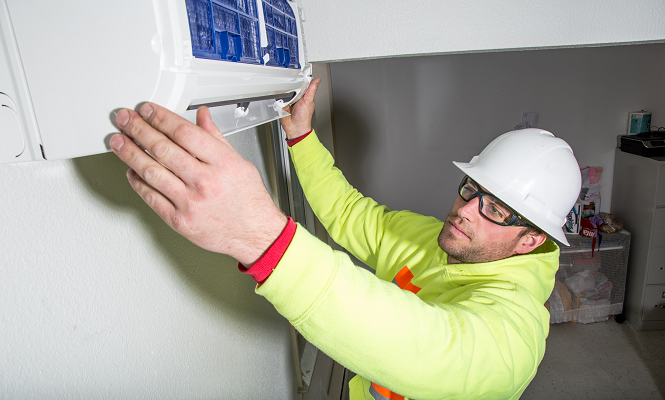Celebrating American Leadership in Energy Efficiency this Fourth of July
Let's Save Energy
Alliance to Save Energy's Blog
Celebrating American Leadership in Energy Efficiency this Fourth of July

Fourth of July may be a day for fireworks, cherry pie, and eating way too many hot dogs, but it’s also a time to reflect on this country’s history—particularly if COVID-19 has changed your BBQ plans. As lovers of all things efficiency, we couldn’t help but take this opportunity to think back on the half-century history of energy efficiency in the U.S., and where we might just go from here.
Energy efficiency as national security
While it’s easy to sometimes take energy efficiency for granted these days, the very existence of the efficiency sector is directly tied to national security concerns of the 1970s. During the 1973 Arab-Israeli war, Arab members of the Organization of Petroleum Exporting Countries (OPEC) imposed an oil embargo on the U.S. in retaliation for the U.S. decision to re-supply the Israeli military. While the short-term effects were gas station lines around the block and oil price increases of up to 400%, the long-term effect was a new national priority on reducing reliance on other countries for energy.
Immediately after the crisis, President Gerald Ford signed into law the Energy Policy and Conservation Act (EPCA) of 1975, which set the stage for years to come by establishing the first national efficiency standards for vehicle fuel economy and energy targets for household appliances. EPCA was followed by a wave of energy-related policy as well as the creation of the Department of Energy (DOE) in 1977. But the DOE wasn’t the only innovative new organization formed that year: The Alliance to Save Energy was also established! As a bipartisan effort founded by Senators Charles Percy and Hubert Humphrey with the support of President Carter, we’re proud to have been part of this effort from the start.
Efficiency meets the environmental movement
The names of these early policies speak to the era’s priority: saving energy through conservation, or using less energy through habit changes. Energy conservation means turning off a lightbulb – true energy efficiency as we understand it today means leveraging the technology for that lightbulb to use less energy when its on. As our understanding of energy use has evolved, so have our reasons for reducing it. The Environmental Protection Agency (EPA) was formed in 1970, and with increased knowledge of environmental science came the realization that saving energy didn’t just benefit economic security, but could benefit the planet as well. In 1992, the EPA launched the ENERGY STAR label for efficient electronics and since then, the program has helped the U.S. save more than 3.5 billion metric tons of greenhouse gas emissions.
New programs, technology, and scientific research have continued to elevate the importance of environmental responsibility for our economy; today, around 90% of CFOs agree that sustainability is important to their company’s success, and energy efficiency has emerged as an essential tool in reaching sustainability goals without sacrificing productivity. Efficiency improvements in buildings, industry, vehicles, appliances, and other technologies can provide for 40% of the emission reductions needed to meet Paris Climate Agreement targets, showing that the relationship between energy efficiency and the environment is stronger than ever.
Efficiency goes digital
American innovation has pushed the world forward in leaps and bounds in the past several decades (what did we ever do without smartphones?), and efficiency has jumped aboard the tech train. Technology has always been central to our efficiency gains: LEDs for better lighting, advanced insulation for more comfortable homes, and direct injection for fuel efficiency are just a few of thousands of developments that have allowed the U.S. to triple its economic output since 1970 while only increasing energy demand by 50%. However, the internet of things, artificial intelligence, and increased energy storage capacity are taking us into a new, systems-based era. It’s one of the reasons the Alliance launched our Active Efficiency Collaborative – we’re not just looking at one lightbulb’s energy use anymore, we’re looking at how every lightbulb is tied into the grid. With technologies that would have been unimaginable just years ago pushing our country forward at lightning speed, it’s thrilling to think what will be possible down the road.
That said, we know the path forward right now can feel downright uncertain. But as we reflect on our history, we know that, from emerging as a response to national crisis to becoming an essential feature in our country’s culture of cutting-edge innovation, energy efficiency is resilient – and once again, ready to meet the moment.
Have a safe and happy Fourth everyone.
STAY EMPOWERED
Help the Alliance advocate for policies to use energy more efficiently – supporting job creation, reduced emissions, and lower costs. Contact your member of Congress.
Energy efficiency is smart, nonpartisan, and practical. So are we. Our strength comes from an unparalleled group of Alliance Associates working collaboratively under the Alliance umbrella to pave the way for energy efficiency gains.
The power of efficiency is in your hands. Supporting the Alliance means supporting a vision for using energy more productively to achieve economic growth, a cleaner environment, and greater energy security, affordability, and reliability.



